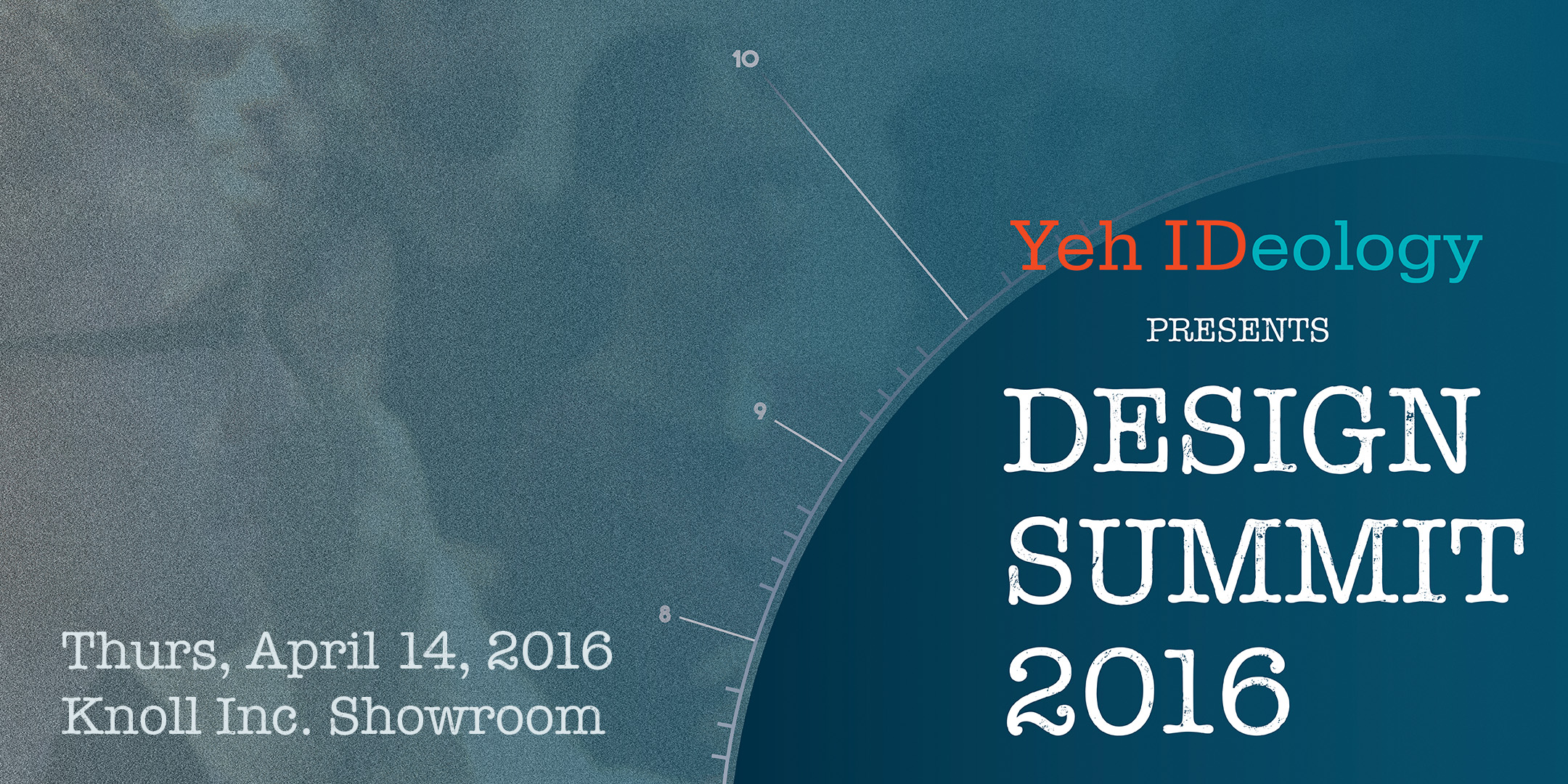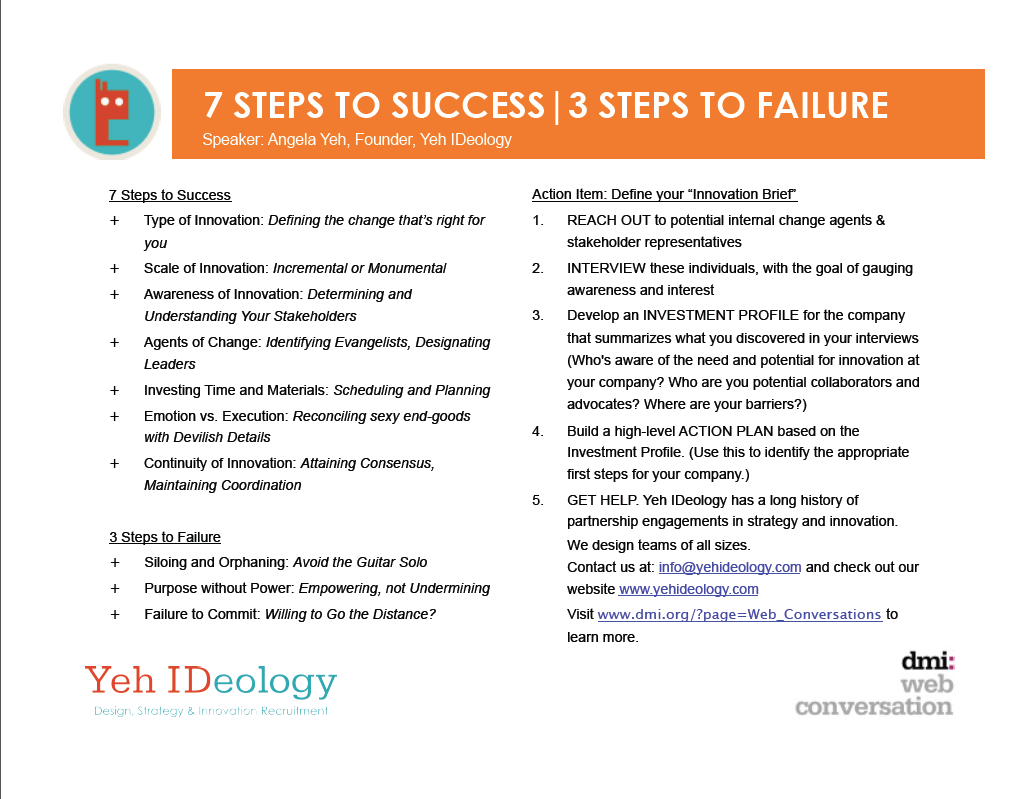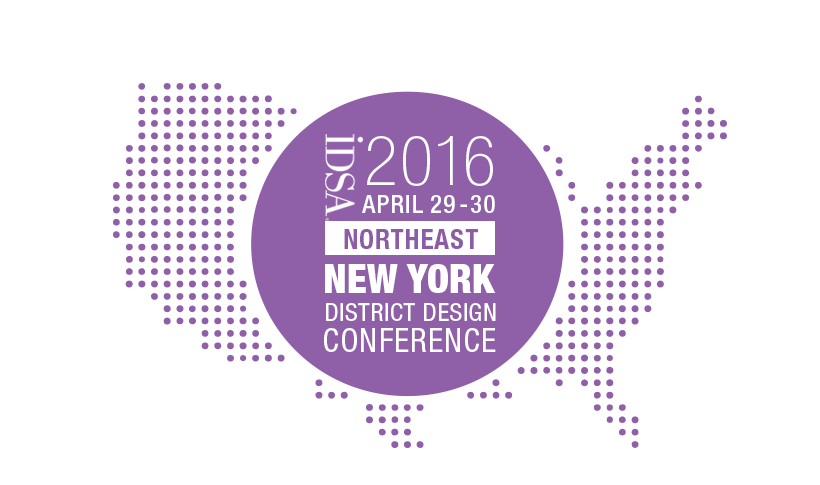 Join Angela Yeh at the 2016 IDSA Northeast District Design Conference tomorrow April 30! Have questions about innovation trends and cultural shifts in the industry? REGISTER and ask Angela today!
Join Angela Yeh at the 2016 IDSA Northeast District Design Conference tomorrow April 30! Have questions about innovation trends and cultural shifts in the industry? REGISTER and ask Angela today!
What Does It Take to Hire Great Workers? (Hint: More Than You Think)

Because a strong worker is a hot commodity.
You’ve heard it before and you’ll hear it again: your workers are your best assets. Why? They may not lead your business or have big dreams about the direction of the company, but they are the people who make the company run. They are the ones that who hard toward making the company’s dreams become a reality — and that’s a pretty big job. Remember, you hired them because you couldn’t do it alone.
But why do so many companies find it difficult to hire the right prospects for open positions? The National Center for Education Statistics predicted, “In fall 2015, some 20.2 million students [were] expected to attend American colleges and universities, constituting an increase of about 4.9 million since fall 2000.” So what’s the deal? With so many young adults choosing to attend college you’d think that there would be more than enough educated, trained, and experienced people ready to take on new jobs.
Most bosses write it off as a talent shortage, but the real problem might not lie in the potential talent — it may lie within the four walls of your office.
It’s going to take some change for companies to really begin finding the right workers.
One of the main problems companies face is that they aren’t really setting the right expectations. Between robotic-sounding job listings to unrealistic job descriptions, some qualified and talented workers might be too intimidated to respond to job ads. Or, as Liz Ryan writes for Forbes, it’s time to “humanize your recruiting process.” As you search for new talent, you need to remember that this talent comes from real live people, and people are attracted to things that are exciting or familiar and comfortable — not something that sounds stuffy, confusing, and is loaded with jargon.
Your workplace culture plays a huge role in your hiring.
With Millennials taking over office life, they’re bringing different expectations and workplace standards with them. Some of these changes include an emphasis on work-life balance, opportunities for growth, better benefits and more time off, as compared to the stability and stature that previous generations sought.
But it’s critical to be observant about what employees in your particular industry are after. You need to understand what they’re looking for in a workplace and be cognizant of what’s scaring them away. Ryan shares, “Glassdoor has done a great job of warning talented people away from organizations where their talents would go to waste . . . When your culture is healthy, talented candidates will flock to you. When your culture is bad, you’ll run job ad after job ad and get a disappointing response every time.”
Once upon a time, employees didn’t have a real eye behind the walls hiding a company. They only knew what the company projected itself to be. So with scary Glassdoor ratings, employees are informed about the questionable choices and other struggles companies deal with internally.
But Glassdoor also provides employers with useful insight into why employees may love or hate their jobs. And this information is safer in their eyes than an anonymous annual survey. It’s important to take employee feedback, actually address concerns, and implement some of their ideas for a healthier workplace.
You need to match the candidate’s strengths with your workplace culture.
You may have a talented worker or a great workplace culture, but that doesn’t exactly mean they’re made for each other. It takes a special, trained eye to match the candidate’s talents with the right workplace.
Yeh IDeology understands and respects the career needs of our candidates and the employment needs of companies. We’re proud of the connections we help create as we manage strategic placements through client/candidate introduction to offer and acceptance. Our searches range from entry-level openings to top executive and director positions, and we work hard to match the right candidate to the right job each step of the way. Sound like the missing link in your hiring and recruiting process? Contact us today!
Design Summit 2016
Come celebrate our 10th anniversary with us and register for Design Summit 2016 !
The role of design has shifted and has become more impactful than ever before. Management consulting and professional service corporations are acquiring design firms and annexing creative offerings to their portfolios. Leading corporations are building design proficiency in house, VCs are building innovation advisement on their boards, and innovation divisions into the ventures they back. Startups include designers as founding partners and companies expect strategic design to be part of the corporate agenda. Design has become a movement from the periphery to the heart of businesses.
Our panel of experts will discuss how to qualify, structure, and keep a creative team and culture aligned for success. Join us in learning how to organize and envision a better future and experience for your designed culture.
REGISTER HERE!
PANELISTS
Adetola Abiade - BNY Mellon, Regional Director, Head of Global Innovation Americas
Deb Mangone - Pfizer Inc.- Sr. Director, Worldwide Innovation
Denielle Wolfe - Denielle Wolfe Consulting - Principal | formerly Tumi - Vice President of Product Development and Design
Eric Freitag - R/GA - Group Director of Product Innovation
Angela Yeh (moderator) - Yeh IDeology - Founder and CEO
WHEN: Thursday, April 14, 2016 from 6:30 PM to 9:00 PM (EDT)
WHERE:
Knoll Inc. - 1330 Avenue of the Americas, New York, NY 10019
Yeh IDeology Asks: Does Your Company Have a Game-Changing Talent Management Strategy?

If not, the time to create one is now.
While it makes sense that many business executives are focused on the daily operations of their companies, today’s business leaders are learning that there’s another facet to their business that is critical to their success. A talent management strategy is not a new concept but one that many business leaders have failed to involve themselves in leaving the task of building and retaining their teams to HR and management. Executives that realize the value of active involvement in their talent management have discovered a key way to drive success and gain an edge over the competition.
Believe in it, articulate it and participate in it
Executive managers that believe in the importance and value of a talent management strategy do more than talk the talk. They’re actively involved in the process and are committed to ensuring that their top managers are accountable for the process as well. By so doing, they are setting themselves apart and building teams that not only lead, but redefine their industries. An article in Harvard Business Review takes a look at BlackRock, the world’s largest asset management firm and two other companies. They were interested in discovering first, how BlackRock continued to prosper and perform when their competitors were struggling to get back on their feet after the 2008 recession. Second, the secrets to success of the other companies. What they found out may surprise you.
“Although these companies vary widely in scope, scale, and maturity, they demonstrate the essential attributes of a game-changing organization: They are purpose-driven, performance-oriented, and principles-led. And in the process of conducting interviews at these companies, we discovered a thread that weaves them even more tightly together: All three have superior talent strategies.”
Attracting and recruiting the right people for the right positions
Companies that have commitment from their top executives to create and cultivate a game-changing talent management strategy are the ones who will ultimately attract the right people for the right positions. These companies will have the kind of culture that top talent find desirable… a place where they can develop their skills, expand their knowledge, and grow in their career. Moreover, these companies foster a sense of responsibility and a high level of engagement among their staff because each member of the team knows the “why” and is deeply committed to success.
A talent management “overseeing” committee
In the Harvard Business Review article, the authors note that one thing that makes BlackRock different from other companies is their formation of a Human Capital Committee (HCC) which included 35 senior line leaders of the company, only one of which is from the Human Resources Department. The committee is one of the ways that BlackRock demonstrates their belief in the importance of talent management to their success. Their HCC guides every aspect of their talent management strategy including talent planning and recruitment, ensuring a high-performance culture and more.
Developing a committee in your organization that’s made up of top executives who will oversee all of the aspects of attracting, recruiting, training, developing, and retaining talent is one way to elevate your talent management strategy to a whole new level.
Providing purpose and encouraging collaboration
It’s not enough that your team members know the “what” when it comes to your company mission. Those companies that offer employees a sense of purpose have more highly engaged workers who are more productive, efficient, and happier. Those that encourage collaboration see higher levels of innovation, employee morale, and a greater sense of belonging. At BlackRock, company leaders not only encourage collaborative efforts, they actively participate in it with their teams. In the article, the President discusses how the firm uses a collaboration tool that allows them all to look at the same information at the same time, allowing them to talk as “we” not “they”. There’s a collective spirit that translates to every member of the team.
There’s no doubt about it. Recruiting, hiring, and retaining top talent is not achieved the same way it was years ago. What used to be the sole responsibility of HR management should now be a focus of top company leaders and adopting this thinking is the first step to building your own game-changing talent management strategy. Consider all of these points when you are ready and talk to us. We lead the industry in recruiting creative talent and assisting organizations is finding the most valuable human assets for their team.
New Year’s Resolution Naysayers: This One’s for You!

When everyone else’s career resolutions are fizzling, yours could be just beginning!
We’re now into the second month of the new year and many people have already given up on their New Year’s resolutions. Fitness centers that were jammed with motivated members have already started to thin out. Even those who set career resolutions often find themselves struggling to keep them and end up giving up during this time. It’s not surprising or uncommon; breaking habits and forming new ones is difficult—and these are the type of resolutions that most folks set.
Most people fail at their personal resolutions simply because they set the bar too high—like trying to lose too much weight too fast or attempting to run a marathon even though they’ve never run more than a mile.
But making resolutions related to your career, having ambition, striving to improve or having the desire to branch out to a new path are not only reasonable goals, if you follow through, they are within your reach.
I believe there’s a better way to take on the new year, to set goals, stay motivated and achieve even more than we imagined!
1. Take a good, hard look at your job and your company
You go to work everyday, but how often do you really sit and think about what you do? For many people, work becomes such a routine that they hardly ever really, deeply think about what they’re doing.
So one great way to start off the new year is to sit down and take a good, hard look at your job: are you happy doing what you do? Are there areas for growth and learning or new opportunities that you’re not tapping into or reaching out for?
Try to be totally self-aware—keep in mind that just because you’re not UN-happy, doesn’t mean you’re happy. Does what you’re doing give you fulfillment? If you come to the conclusion that you’re not totally satisfied, that maybe you’re longing for something more, it’s time to consider what you can do to change that.
When we coach individuals or team building workshops for clients, we often find that professionals stop talking to their employers about improving their career situation, if they communicate about it at all. We also see that they stop looking for learning and growth opportunities before moving on.
But when you grow and push and reach for more at your current job, the more prepared you are for future opportunities, whether the bigger and better things you move on to are with your current employer or elsewhere.
2. Decide to do more
Another achievable goal is to make a conscious decision to do more. Whether you find yourself avoiding certain tasks at work or skipping networking events or learning opportunities (I get it, you’re tired!), the new year brings lots of new possibilities that you can take advantage of to enhance your career.
So before you brush this one off thinking, “I’m already too busy,” make it realistic by setting a more reasonable goal, like committing yourself to attending one event each month or signing up for a webinar every two weeks. Little steps can lead to big accomplishments!
3. Put another notch in your belt
Adding more skills to your repertoire is an awesome way to start the new year. It also makes you more marketable if you decide you’re ready for a change. Want to enhance your technological skills or ramp up your design techniques? There’s no time like the present!
And if your job is related to the skills you want to learn, all the better! Your employer may even cover the cost of an online course or an industry seminar. Just remember to keep the goal real and reasonable—don’t expect to become a pro in something new overnight.
4. Give your resume a makeover
It’s always a good idea to review to your resume, update it and refresh it on a regular basis and the new year is as good a time as any. Plus, having an up-to-date resume is key if you are thinking about a career change and you never know when the opportunity of a lifetime will come along or a recruiter will be seeking your exact skill set.
5. Get better connected
“Make new friends and keep the old”, you remember that old song, right? You have good friends and colleagues but adding to your network is always positive. You never know who you’ll meet that may become a mentor, lead you to a new opportunity or give you new insight into your career.
Making new connections doesn’t have to cause you stress or take a lot of time, either—it all depends on how you go about it. So again, set realistic goals for yourself, like joining a new group on LinkedIn, committing to meeting one new person a month, attending a workshop every other month or whatever is appealing and attainable to you.
Change your career path in one simple step
If you’re tired of making new year’s resolutions about your career and not following through, you can change all that with one phone call to Yeh IDeology. We’re a Design & Strategy recruitment firm that guides motivated individuals through the development of their careers by analyzing their profiles and clarifying their goals.
Our extensive, introspective process has enabled managers, executives, business owners and self-employed professionals to analyze and target the best possible direction for their careers—and it can help you too! To learn more, call us at 212-348-6511 or email us at info@yehideology.com.
Happy Holidays from Yeh IDeology
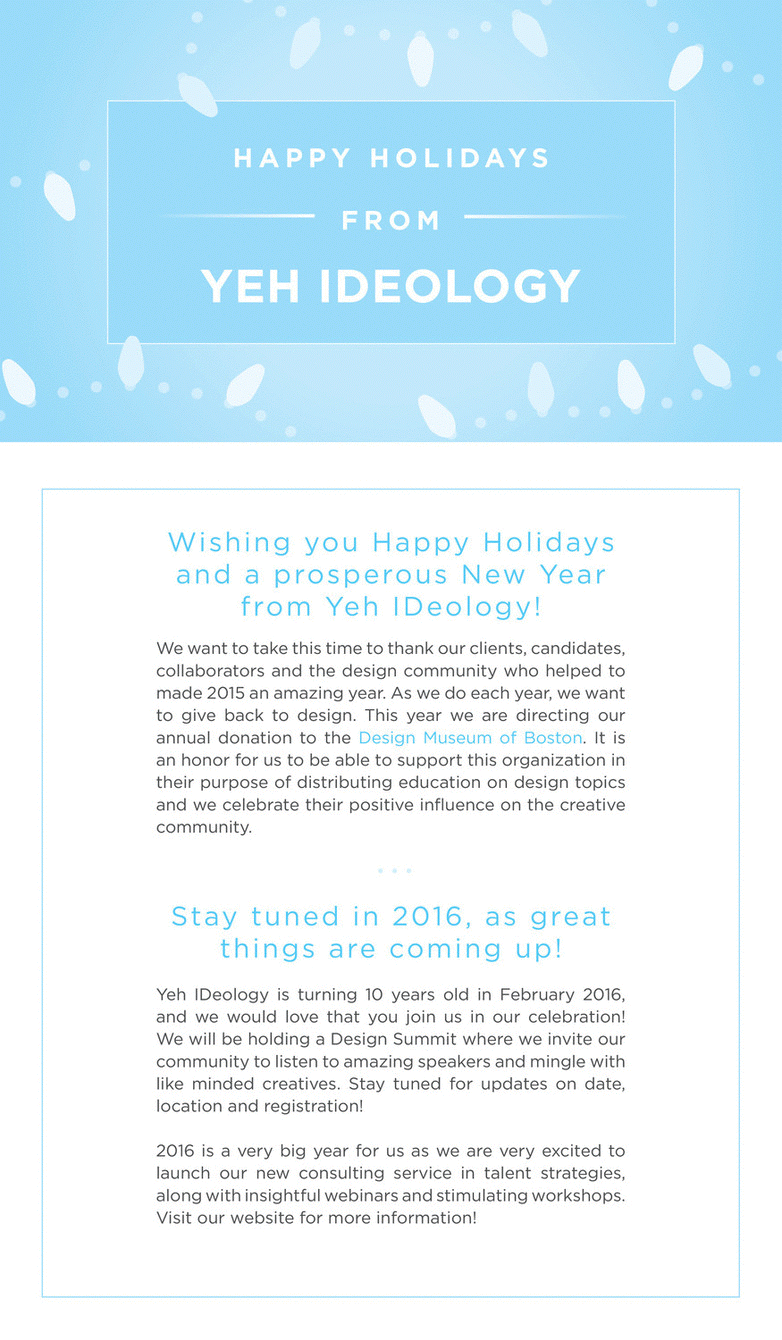
Polymaths and Multipotentialites in the Changing Talent Economy

Time to shift gears! There's a new employer-employee relationship taking shape
Have you heard the term multipotentialite? If you’re a business owner or a hiring manager looking for creative talent, it’s time you did. The talent you seek is changing, evolving and diversifying. Years ago, the career path was just that—a path one took from the start of their career, learning all the different aspects of their chosen field, gaining new skills and responsibilities along the way, and ultimately arriving at the top of the proverbial ladder.
But there’s change happening. People are different—their focus has shifted, their goals are continually changing and instead of stability, they’re pursuing variety in their careers. Companies that recognize, embrace and nurture this change will come out ahead of those that don’t.
What are multipotentialites?
According to Emilie Wapnick’s recent TED Talk, Why some of us don’t have one true calling, multipotentialites are those with many interests and creative pursuits—also known as polymaths or Renaissance people.
It’s no longer “till retirement” do us part
Forget everything you ever thought you knew about a team of dedicated, long-term employees who would commit to your company for better or for worse, until retirement. That employer-employee relationship is changing as more people in the talent pool become polymath in their skills and realize that their career doesn’t have to be restricted to just one direction.
What does this mean for employers?
According to The Alliance: Managing Talent in the Networked Age, a book co-authored by LinkedIn Co-Founder, Reid Hoffman, Ben Casnocha and Chris Yeh;
“The traditional model of lifetime employment, so well-suited to periods of relative stability, is too rigid for today’s networked ages. Few American companies can provide the traditional career ladder for their employees anymore; the model is in varying degrees of disarray globally.”
Employers looking for talent need to not only understand the needs and motivations of polymaths, but also to view them as allies and offer them opportunities to pursue and develop their skills in a diverse set of interests. The employment relationship needs to change into more of an alliance—where both the company and the employee are adding value to each other.
Organizations who embrace this shift in the relationship will reap the benefits of talent that have a diverse set of skills, and by fostering their individual growth, they in turn will help the company grow.
3 reasons to hire multipotentialites
Emilie Wapnick answers that question when she describes the “superpowers” of polymaths:
1. Synthesis
Synthesis occurs when two disparate fields are combined and something new is created at the intersection. This is where new ideas and innovation happen, and those with multiple skills and backgrounds are able to access a lot of these points of intersection.
2. Rapid learning
Multipotentialites are ravenous when it comes to learning something new. By their very nature, they’re not afraid to be beginners and don’t fear the unknown, so they’re constantly stepping out of their comfort zone.
3. Adaptability
It only makes sense that a multipotentialite who’s continually seeking new skills, new knowledge and increased experience would be able to easily adapt to new and unfamiliar situations. Imagine how valuable it would be to have a team member who can jump into any positon and take it over easily and effectively.
The takeaway
There’s no denying the change that’s occurring between employers and employees. The relationship continues to evolve and those companies that get onboard will add value to their company by making alliances with multipotentialites—encouraging them to be themselves, giving them opportunities to pursue knowledge in a diverse range of interests. Ultimately, by doing so, there will be more and more innovative, out-of-the-box thinkers who can tackle challenges, solve problems and create new and better ways to do things.
By understanding what drives talent in this select pool, Yeh IDEology is uniquely positioned to analyze and select candidates that drive innovation and impact in alignment with your business goals.
10 Quirky Questions to Qualify Creative Talent

You can not ask the same old tired questions when searching for creative talent. Here is what you should be asking—and what the answers will reveal about the candidate!
We all know that when it comes to recruiting top talent, hiring managers and recruiters can only take a resume at face value. The true determination of each candidate’s potential fit inside your company goes much deeper and is often only discovered after you bring them onboard—which is too late.
But today’s recruiters and others involved in the hiring process are getting more savvy in their interviewing process, including the questions they ask, which are designed to reveal the candidate’s true personality, thought process and their level of creativity.
If you’re in search of creative talent, here’s a look at some of the newest questions interviewers are asking, although they may seem quirky (and they are) each one serves a specific purpose.
- What’s the toughest decision you’ve had to make in the last few months and how’d you make it?
Asking this question offers up a view into how your candidate solves problems and analyzes situations. A person with a creative mind will use reasoning and analyzing to come up with solutions and be able to look at things from various angles before making a decision.
- What were you doing the last time you looked at a clock and realized you’d lost track of time?
Creative people are known for diving into a project, getting the ideas flowing and not coming up for air until it’s completed—to them, time is not even a concern if they are doing something they love. If your candidate answers this question by relating a story about a work project, you know you could have a winner.
- What movie, no matter how many times you’ve seen it, do you have to watch when it’s on?
Movie favorites, just like books and TV shows, reveal a lot about a person’s personality. If your candidate’s favorite movie of all time is about an underdog who overcomes challenges and adversity, for example, this shows that they’re motivated, thrive on being challenged and are easily inspired.
- If you had to describe the color yellow to someone who was blind, how would you describe it?
Weird question, yes. But think about it? How do you explain what a color looks like to someone who’s never has and never will see it? Answers to this question not only show how creative they are, they demonstrate how conceptual the candidate is and how well he or she can articulate ideas.
- What would you most like to learn here that would help you in the future?
This question lets the candidate know there’s growth and learning opportunities at your company and allows you to delve into their aspirations for the future. A creative person is curious and enthusiastic by nature.
- What is something that you’re proud of that you’ve done in the last few years?
A great question if you’re looking for a person who takes pride in their work. If your candidate can easily come up with something they’re proud of, you’re on the right track.
- If we are sitting here a year from now celebrating a great year for you in this role, what did we achieve together?
The answer to this question shows whether or not your candidate has done their homework and knows what your company’s mission is. It also will reveal their aspirations when it comes to the position you’re filling—do they expect it to grow into another role or one with more responsibility?
- What concerns do you have about our company?
Another question that will help you see if the candidate has researched your company and knows what you’re all about. If they have no concerns, it’s likely they’re not being candid or haven’t done their homework, because no company is perfect. On the other hand, if they offer up their honest opinion and add in ways they think they could help make it better, you may have a winner on your hands.
- How would former co-workers describe you if I were to interview them?
The answer to this question not only shows how well your candidate got along with his or her coworkers in former positions, but it also shows how he or she thinks others view him or her.
- What are you the best at or what’s your superpower?
You’re building a team and so it only makes sense to get people who have a diverse set of skills. This question allows your candidate to express what they think their strongest abilities are and gives you insight into where they would fit into your team.
The process of interviewing job applicants has certainly changed for the better over the last few years. We’ve gone away from asking the tired “why do you think you are right for this company” to asking questions that provide a deeper, clearer picture of a candidate’s work ethic, how they think, solve problems, and how they’d fit in with your company culture. If you’re searching for top creative talent and aren’t sure how to identify the skills you need, give us a call.
5 Reasons Creative Talent Drives Business Success in Any Market

If you think your company doesn’t need creative talent, think again!
You want your company to succeed. You’ve got a million-dollar idea and a sound strategy to carry it out. But unless you have the right people to execute your ideas, those ideas and strategies are of little use. And while you may be thinking that the business you are in doesn’t require creative talent, the reality is that every company, no matter what the industry, needs those with creative abilities to propel them to success. Here’s why:
- They’re committed
Say what you will about those with a flair for the creative, but if there’s one quality they share, it’s commitment. Artists, writers, designers, no matter where their creativity lies, have passion for what they do and they bring it in the form of unwavering commitment to their work.
- They’re innovators
Creative talent seek originality in all that they do, so it makes sense that they are often the innovator or the one that comes up with a brainstorm that no one else has thought of. They’re ability to think differently is often the key to a company gaining an edge over their competition.
- They’re uninhibited
Artists, writers and other creatives don’t restrict themselves or others to a certain solution and are unafraid to express their ideas or opinions. Even if their thought process is seemingly radical at times, creative team members will be the ones to spark a discussion and express their ideas fully. This freedom of thought and expression gives way to forging new solutions and ideas among the entire team.
- They’re curious
To a creative person, there’s nothing more exciting than finding out how or why something works or doesn’t work. If it’s a marketing idea or a product, they’ll be the ones who will look at it every which way to Sunday and come up with a large number of ideas or solutions. They are also known to create many “what if” scenarios, manipulating ideas by enhancing them or changing certain aspects.
- They’re open to criticism
Creative people are generally good at taking feedback and often crave it so they can improve on what they do. They’re also known to offer constructive criticism to others because of their free-thinking and open-minded approach to ideas and solutions.
After reviewing the ways that creative people think, act and work, it should be clear that having creative talent would be more than beneficial. Their unique capabilities and strengths can take your company to totally new heights—achieving things you never even thought imaginable. For more information on getting top creative talent, give us a call.
Angela Yeh on "Virtual Teams: The Future or Fiction" Summit
Angela Yeh will be participating as guest speaker in the online summit, “Virtual Teams: The Future or Fiction”. Her interview is going live September 17th at 11:00am and you can also listen to 15 experts from different fields from September 15th through the 18th. Click on the following link for more information and how to register for FREE to be notified when the interviews go live. They’re only available for 24 hrs, so sign up soon. http://www.eckfeldt.com/virtualteams/yeh
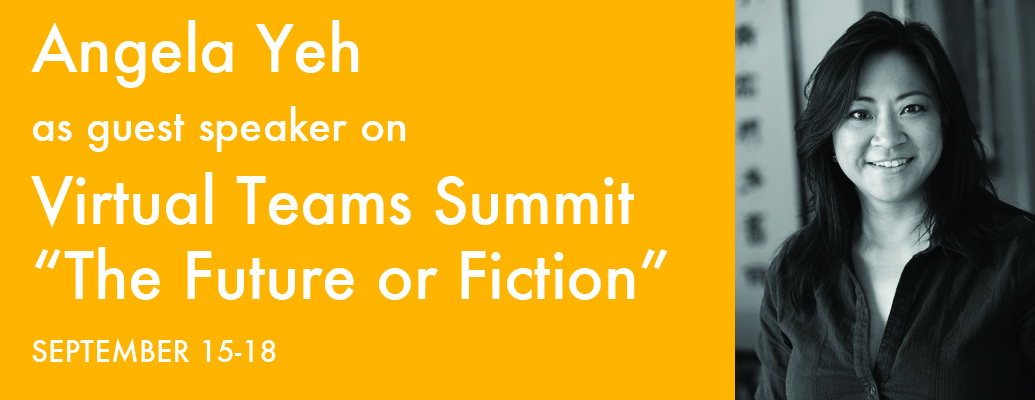
Angela Yeh on #ModernMonday hosted by Dwell + Design Milk
Checkout #MondernMonday on Twitter at 1:00pm as Angela Yeh joins other designers and educators to discuss their thoughts on Mentoring the Next Generation of Design. http://www.idsa.org/news/member-news/mentoring-next-generation-design
Integrating Innovation: A One-Page Cheat Sheet
Last November, Angela Yeh, Founder and CEO of Yeh IDeology, took part in DMI’s Web Conversations, geared towards organizations and business owners, management and hiring managers with the specific topic challenge: "How to Build Innovation into Your Organization” In this series, we revisited Angela’s talk, “Integrating Innovation,” while highlighting excerpts, thoughts from the talk, and delving further as we go into each of Angela’s 7 best tips for innovation success and 3 major pitfalls to avoid.
In this final blog entry, we're posting our one-page cheat-sheet which recaps Angela’s 7 Steps to Success | 3 Steps to Failure and hopefully serves as a handy reference with helpful action items to get started.
Interested in this topic or others we've been speaking about? Click on the word bubble to leave us a comment, send a tweet, or connect via LinkedIn! Want to hear directly from Angela Yeh and her 15+ years of design recruiting experience? Drop us a line at info@yehideology.com
Integrating Innovation: Step 3 to Failure
Last November, Angela Yeh, Founder and CEO of Yeh IDeology, took part in DMI’s Web Conversations, geared towards organizations and business owners, management and hiring managers with the specific topic challenge: "How to Build Innovation into Your Organization” In this series, we’ll be revisiting Angela’s talk, “Integrating Innovation,” while highlighting excerpts, thoughts from the talk, and delving further as we go into each of Angela’s 7 best tips for innovation success and 3 major pitfalls to avoid.
Shall we continue?
INTEGRATING INNOVATION Step #3 to Failure: Failure to Commit. Are You Willing to Go the Distance?

At some point in the innovation process, you’re going to fail. The question is: What do you do after? Do you lay there and give up? Or do you do what you were hired to do and limp, leap, or whatever else it takes to get back up again and forge onward?
If you’re still reading this, then you already know that reaffirming your commitment (and that of your of your team) will be a constant battle in any innovative push. Your next task: learn from your mistakes. Why did you fail? Was it your own darn fault?
If you find yourself suggesting “Perhaps they didn’t see the value in it,” maybe YOU didn’t communicate that value effectively; Maybe you didn’t properly translate the work of one department to another, resulting in a breakdown in coordination and commitment, and, perish the thought, a dreaded silo.
Think back to Step 7, Innovation Continuity. As your initiative moves forward, a major responsibility is actually upkeep – continuing to maintain and nurture the delicate back and forth channels of communication, cooperation, consensus and collaboration. Yes the line-level, nitty gritty duties are what actually make the innovations, but a high-level perspective keeps the overall goals in mind and, ultimately, will help you see the initiative all the way to completion.
This also means your lead change agents are diligently watching your supply of resources, regularly gauging motivation, and constantly thinking, as you progress, how to incentivize the team to continue. Looking ahead, they’re spotting potential barriers and navigating away from potential road-blocks so the rest of the team can focus on the actual vehicles for innovation.
Our best advice here? Learn from your mistakes and keep moving forward. Better yet, read case studies, get advice, speak to colleagues and mentors, and learn from their mistakes (think cost- and time waste avoidance). Remember, innovation requires constant re-evaluation, renewal of buy-in, and team reinvigoration. Everyone must be committed; Everyone must be willing to go the distance.
Good luck. Call us, and let us know how it goes!
Next blog, we’ll recap Angela’s 7 Steps to Success | 3 Steps to Failure with a one-page “cheat-sheet” to refer back to along with helpful action items to get started.
Interested in this topic or others we've been speaking about? Click on the word bubble to leave us a comment, send a tweet, or connect via LinkedIn! Want to hear directly from Angela Yeh and her 15+ years of design recruiting experience? Drop us a line at info@yehideology.com
Integrating Innovation: Step 2 to Failure
Last November, Angela Yeh, Founder and CEO of Yeh IDeology, took part in DMI’s Web Conversations, geared towards organizations and business owners, management and hiring managers with the specific topic challenge: "How to Build Innovation into Your Organization” In this series, we’ll be revisiting Angela’s talk, “Integrating Innovation,” while highlighting excerpts, thoughts from the talk, and delving further as we go into each of Angela’s 7 best tips for innovation success and 3 major pitfalls to avoid.
Shall we continue?
INTEGRATING INNOVATION Step #2 to Failure: Purpose without Power. Empowering, not Undermining
Tell us if you’ve heard or thought this before: “We want to build an innovation center.” We see this mistake frequently—from the organization side as well as the talent spectrum. Yes, it’s great if a company can house its creative minds together to cross-pollinate concepts and solutions, and share in challenges. It’s an attractive label with compelling associations, however, as noted in Step 1 to Failure, they must also work closely and cross-departmentally with management, marketing, design, finance, customer service, whatever your departments might be—or you may be setting your team up for failure right from the get go.
This aspect of innovation hinges on access. You must empower your agents to cut through red tape and bureaucracy and enact the change you’ve all agreed upon. This echoes back to Step 5 and how much time & materials a company is willing to invest in innovation. If your agents do not have the sufficient time, or team members, or financial support, they risk being all purpose, but no power.
To avoid this requires buy-in and pre-planning, plus a solid commitment from management. Start this conversation early and avoid undermining your own efforts. Just as effective laws require a method of enforcement, make sure your initiative can deliver on the grand ideas—make sure it has legs to bridge gaps and teeth to make decisions and take action.
Next on our blog series: Step #3 to Failure: Failure to Commit. Are You Willing to Go the Distance?
Interested in this topic or others we've been speaking about? Click on the word bubble to leave us a comment, send a tweet, or connect via LinkedIn! Want to hear directly from Angela Yeh and her 15+ years of design recruiting experience? Drop us a line at info@yehideology.com
Integrating Innovation: Step 1 to Failure
Last November, Angela Yeh, Founder and CEO of Yeh IDeology, took part in DMI’s Web Conversations, geared towards organizations and business owners, management and hiring managers with the specific topic challenge: "How to Build Innovation into Your Organization” In this series, we’ll be revisiting Angela’s talk, “Integrating Innovation,” while highlighting excerpts, thoughts from the talk, and delving further as we go into each of Angela’s 7 best tips for innovation success and 3 major pitfalls to avoid.
Shall we continue?
INTEGRATING INNOVATION Step #1 to Failure: Siloing & Orphaning. Avoiding the Guitar Solo

Steps 1-7 covered our best tips for innovation success. By now, you’ve decided the type(s) of innovation at the proper scale, determined your starting point, elected your leaders, laid out a plan, trimmed down distractions, and wrangled everyone to the same page. If you’ve made it this far, you’re ready to discuss failure.
Step 7, in particular, focused on the need for consensus and coordination, whether across a team, a department or company-wide. As you move forward, this will be your biggest challenge: Keeping your initiative alive and current on everyone’s planner, while juggling the rest of your other hats. This is a time when eyes begin darting down at smartphones and chairs are being slowly wheeled back to their desks.
This is because you’re proposing systematic change. And change is hard. Very rarely do we have the luxury of building from scratch and the longer a process or set of protocols has been in place, the harder it will be to adjust course. Imagine attempting to turn a kayak versus cruise ship.
To turn the ship and roll with this natural tendency towards business-as-usual, you will need to identify your barriers and devise plans to break them down or circumvent altogether. This goes back to your plan of action in Step 5, the details you’ve sussed out in Step 6, and of course, consensus and coordination in Step 7. Or rather, the flip side of these steps—where if you fail to plan correctly, you risk your efforts becoming siloed or worse, orphaned and abandoned altogether by the very teams you just met with. As fun as it looks in live concert, don’t let this be your guitar solo.
And yet, sometimes it’s unavoidable for any variety of reasons: a lack of capability, interest or appropriate vision, insufficient time—there never is—minimal resources, excessive red tape, or bloated bureaucracy. Sound familiar? Take heart because you’re not alone. As an example of silo-ing, we had one corporation where the company owned many different businesses. Because of their vast infrastructure, they missed multiple opportunities to share resources, which greatly impacted their bottom line from a cost standpoint, as well as their ability to coordinate initiatives across these businesses. Understanding this, we brought in someone who knew systems; someone comfortable reaching across different departments and disciplines that could balance all the individual objectives, while also identifying opportunities for increased connectedness and efficiencies. In this case, this particular change agent was inserted at a very high level to work with everyone in the entire chain, from the C-suite to IT to marketing, design, customer service, and even shipping. Their key role: educating stakeholders to be as knowledgeable as they are and attaining consensus on the need to innovate internally—before addressing other sexier end-goals specific to each individual business unit.
At Yeh IDeology, we think of this ability to educate as being multilingual: an ability to speak to all stakeholders in their own language, then translate and communicate the needs, objectives, and capabilities they discover to all other stakeholders involved; a capacity and willingness to hear out all the challenges and incorporate appropriately into current efforts or future initiatives; and an authentic understanding that a success for the innovation team is ultimately a success for all within the organization.
Key takeaways: Get to know your various teams and departments and the potential barriers you’ll face. Then, identify effective channels of communication and focus on keeping those open and updated. Involve all your stakeholders and delegate this priority to them as well. As noted in previous steps, enlist as many stakeholders as possible and keep them involved with relevant roles and responsibilities. Active participation breeds broad ownership, and in turn, better advocates for communicating the change that is needed. Build this ownership and messaging in company-wide; that way, the efforts of the various teams—though individual—remain coordinated and integrated within the larger initiative. Then, with a solid mesh network in place—whether it be through, up, over, around or under—focus on moving forward.
Next on our blog series: Step #2 to Failure: Purpose without Power. Empowering, not Undermining
Interested in this topic or others we've been speaking about? Click on the word bubble to leave us a comment, send a tweet, or connect via LinkedIn! Want to hear directly from Angela Yeh and her 15+ years of design recruiting experience? Drop us a line at info@yehideology.com
Happy 9th Anniversary!
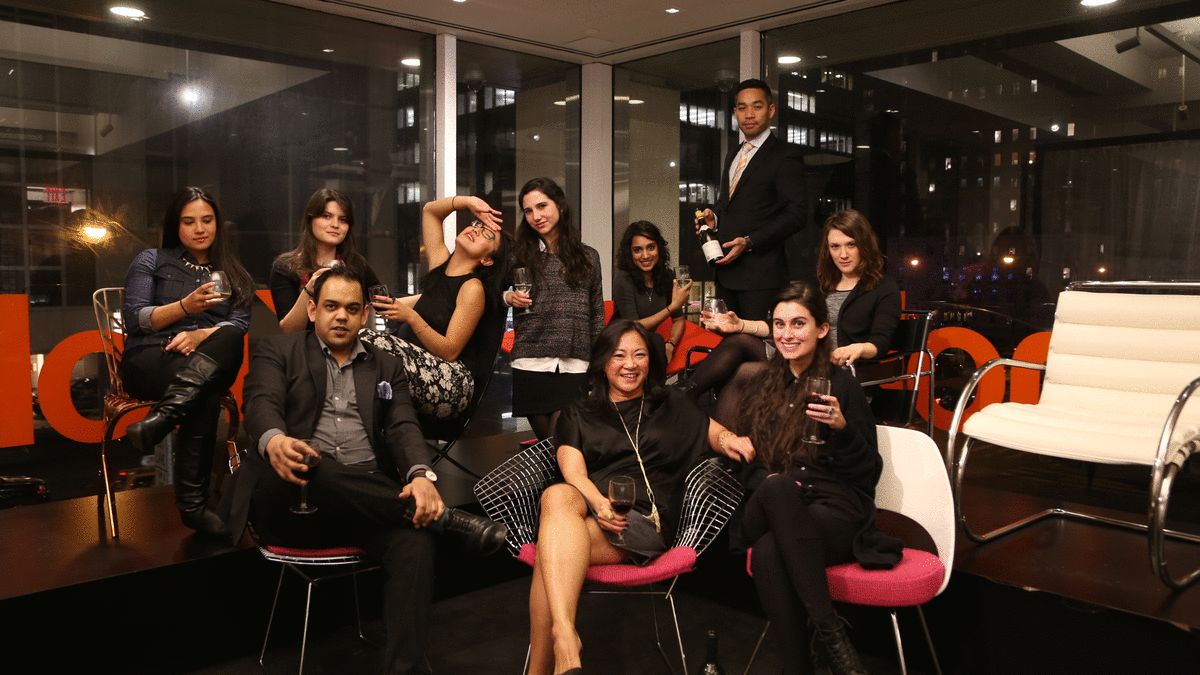 Each year at Yeh IDeology, we mark our anniversary with a Design Summit, inviting industry luminaries to share their challenges, insights and strategies to scaling for growth. We hosted this year's #YehSummit at Knoll's beautiful showroom in the heart of Manhattan, kicking-off and closing, with more wine than water. Enjoy the photo recap below, and tune in for our video recap where we interviewed speakers and guests of the evening.
Each year at Yeh IDeology, we mark our anniversary with a Design Summit, inviting industry luminaries to share their challenges, insights and strategies to scaling for growth. We hosted this year's #YehSummit at Knoll's beautiful showroom in the heart of Manhattan, kicking-off and closing, with more wine than water. Enjoy the photo recap below, and tune in for our video recap where we interviewed speakers and guests of the evening.
Integrating Innovation Step 7
Last November, Angela Yeh, Founder and CEO of Yeh IDeology, took part in DMI’s Web Conversations, geared towards organizations and business owners, management and hiring managers with the specific topic challenge: "How to Build Innovation into Your Organization” In this series, we’ll be revisiting Angela’s talk, “Integrating Innovation,” while highlighting excerpts, thoughts from the talk, and delving further as we go into each of Angela’s 7 best tips for innovation success and 3 major pitfalls to avoid.
Shall we continue?
INTEGRATING INNOVATION Step #7: Innovation Continuity. Obtaining Consensus / Maintaining Coordination

Image
Steps 1-6 covered different types of innovation, scaling your initiative(s), determining your starting point, identifying your change agents, beginning your plan of action, and balancing your exciting end-goals against the tough details that demand your focus.
In the case study from Step 6, the team came to us to build an innovation team so to be perceived as “a Google or Apple.” The tough details, however, were internal regarding their management structure, which had to be addressed first before considering the nuances of their external persona.
This segued beautifully into a listener comment that came in during the original webinar: “What if, during an innovation initiative, despite creating innovative solutions and implementing them, the C-Suite still doesn’t change their management process?”
This is a common scenario. You’ve probably seen it before where “innovation” is being mandated from the top-down, while solutions are germinating from the middle- and bottom-up. There’s nothing wrong with this structure, except when the C-Suite – despite believing in the value of innovation, and understanding your solutions conceptually – underestimates or misinterprets their value, and as a result, changes their investment in the project, and/or fails to adapt their processes to the very change they mandated.
Sometimes its a matter of time and timing. It may take an organization multiple generations of exposure for an innovative idea to take hold. There may be different C-level individuals at the helm, or numerous teams bringing different solutions to the table that compete for company dollars and attention. In some cases, the innovation team itself evolves, is laid off or moves on, and a new set comes in to redevelop the solutions. Sometimes a project just needs several pitches to convince the C-suite it’s a good idea worth investing in.
The key here is continually educating your stakeholders, particularly those holding the purse strings or the power necessary to move forward. It’s about teaching the various constituents, obtaining buy in, and, once you get going, maintaining that consensus and coordination. At Yeh IDeology, we frame it with this question: How do you get everyone on the same page and also keep them turning at the appropriate pace?
In examples we’ve seen, you could have a variety of individuals from different departments coming to the table, all touting that they need innovation and they're ready to support it. Then, when it comes down to building the program, and they’re knee deep in a new product concept or initiative, they suddenly realize “Wow, everyone has a completely different perspective on what’s really needed and how much they’re willing to invest.” It’s about understanding – each team member knowing the other and the entire team, as a whole, while sharing the same vision, plan, and understanding of the objectives.
In some companies, this understanding must extend across an entire organization, requiring the right leaders to effect that change on a corporate-wide structure. In others, it’s very specific to a more narrow aspect of the business, whether that be technology, sales, or customer service, a certain product category, etc.
It’s worth re-mentioning here that innovation is an iterative process and throughout the discovery and execution stage new findings can change the course and direction of an initiative. Be mindful when this happens. It's wise to touch base with all the stakeholders involved so that everyone with a hand in the project is adjusting efforts and expectations accordingly.
So remember, regardless of the variables – we can’t emphasize this enough – continuity of innovation relies on consensus and coordination. Your team must be clear on the deliverables for each department, manager, and stakeholders, while constantly communicating and educating each other every step of the way. Say it with us: consensus and coordination, coordination and consensus.
Next on our blog series: Step #1 to Failure: Siloing & Orphaning. Avoiding the Guitar Solo
Interested in this topic or others we've been speaking about? Click on the word bubble to leave us a comment, send a tweet, or connect via LinkedIn! Want to hear directly from Angela Yeh and her 15+ years of design recruiting experience? Drop us a line at info@yehideology.com
Integrating Innovation Step 6
Last November, Angela Yeh, Founder and CEO of Yeh IDeology, took part in DMI’s Web Conversations, geared towards organizations and business owners, management and hiring managers with the specific topic challenge: "How to Build Innovation into Your Organization” In this series, we’ll be revisiting Angela’s talk, “Integrating Innovation,” while highlighting excerpts, thoughts from the talk, and delving further as we go into each of Angela’s 7 best tips for innovation success and 3 major pitfalls to avoid.
Shall we continue?
INTEGRATING INNOVATION Step #6: Emotion vs. Execution. Reconciling Sexy End-Goals with the Devilish Details

Steps 1-5 covered different types of innovation, scaling your initiative(s), determining your starting point, identifying your change agents, and beginning your plan of action.
Ideally, this has proven fun and informative, and put you actively in touch with many members of your organization. With a comprehensive list of Wants and Needs in hand, you should be ready to push forward.
Today’s post, therefore, is about focus.
At this phase of the project, with so much information in front of you, you’re likely to get sidetracked by the very lofty ambitions you’ve just collected. It hinges on visibility. As an example, one of the most common UX/UI needs that we hear from clients is: "We want someone who can make us look like [pick your favorite fruit-inspired tech giant or popular search-engine company].”This is a great end-goal – to be viewed as a peer to a top performer – but it fails to recognize the operational and infrastructural nuances that often underpin this sort of major innovation. When it comes to design, your internal stakeholders often gravitate towards branding and the aesthetic rather than the technical and functional. They get excited by the blue-sky aspirations and gloss over the drier, necessary steps to build a foundation for your project. The majority of your stakeholders will likely fall in this category, with a comparatively lower awareness of innovation than you – whether its not their background or expertise, or they've been more on the support side rather than leadership. In fact, the majority of seasoned design professionals and leaders also fall into this trap because beauty is so captivating. Even when you are consciously aware of the practical need to build the foundation, we’re still strongly drawn to more visible aspects of a project.
In the case of this example, the initial challenges are actually internal, regarding their management structure. So before they could get to being the next Apple or Google, they need to consider what was under their roof – which had nothing to do with the visible, outward facing aspects of their company. As designers, this comes as little surprise. Sexy end-goals are the most remarkable aspects of your initiative, and often the most exciting. It’s the fancy wrapping that gets buy-in, but the actual implementation, the contents of this package, will demand most of your focus, capability, and resources. The key here: build function side by side with aesthetics.
So how do you stay on track? Maintain a clear distinction between exciting blue-sky aspirations and the key necessities. Then, recognizing the emotional incentives around these aspirations, use this to justify attacking the necessary details. Build this into your objectives with constant reminders to stay focused on the key necessities. Educate your stakeholders on this relationship between sexy end-goals and the devilish details and you give your innovation initiative a fighting chance.
Next on our blog series: Step #7: Innovation Continuity. Obtaining Consensus / Maintaining Coordination.
Interested in this topic or others we've been speaking about? Click on the word bubble to leave us a comment, send a tweet, or connect via LinkedIn! Want to hear directly from Angela Yeh and her 15+ years of design recruiting experience? Drop us a line at info@yehideology.com
Integrating Innovation Step 5
This past November, Angela Yeh, Founder and CEO of Yeh IDeology, took part in DMI’s Web Conversations, geared towards organizations and business owners, management and hiring managers with the specific topic challenge: "How to Build Innovation into Your Organization” In this series, we’ll be revisiting Angela’s talk, “Integrating Innovation,” while highlighting excerpts, thoughts from the talk, and delving further as we go into each of Angela’s 7 best tips for innovation success and 3 major pitfalls to avoid.
Shall we continue?
INTEGRATING INNOVATION Step #5: Investing in Innovation: Time & Materials
The last four blogs focused on identifying types of innovation, scaling your initiative(s), determining your starting point and identifying your change agents.
Whereas Steps 1 through 4 focus on research and familiarization with your organization, Step 5 is about action, or more precisely, your plan of action.
A plan of action takes into consideration all of your findings from Step 1-4 and considers the schedule and amount of resources necessary to bring this initiative to life. In other words: Time and Materials. How much time is needed for the scale of change you desire and are you willing to invest this time? Does it jive with your existing calendar(s)? What about your materials including financial capital, space and equipment, and, of course, human resources?
One thing we’re all familiar with is “yesterday.” We’re in such a constantly shifting economy, with an incredible urgency to innovate on ridiculously tight timelines. To be fair, we’ve seen many successes born of great speed and action. On the flipside, if you don't allow some programs enough time to germinate, to build up sufficient research to formulate a strategy, and then make the time to execute, you’re risking failure right out of the gates.
The key word here is: balance. Balance between failing fast and taking the time to think; between making vast, rapid changes, and slow, incremental tweaks. Each have their merits, but in the context of your plan of action, they also have an appropriate place and time.
As an example, one corporation that we worked with wanted to develop new products on an incredibly short time frame – about 3 to 6 months. In reality, however, it took them closer to a year or two. Another, in the manufacturing space, went the other direction. They said, “Let’s not build something for now; let’s build something for 10 - 15 years down the line.” And off they went, but at some point, they hit a wall. They realized that this too didn’t work; that all this pontification doesn’t lead to anything without clear metrics, true calls to action, and definitive timelines.
So how do you begin determining which plan suits you best? Start by making a list, divided into two sides: Needs (Must Haves) vs. Wants (Nice to Haves). Then take a page out of the designers handbook and make a 2x2 grid. Divide it like your list, left and right, for Needs vs. Wants. Then divide it again, top and bottom: Easy (aka “Low Hanging Fruit”) vs. Difficult (aka longer-term planning and/or investment).
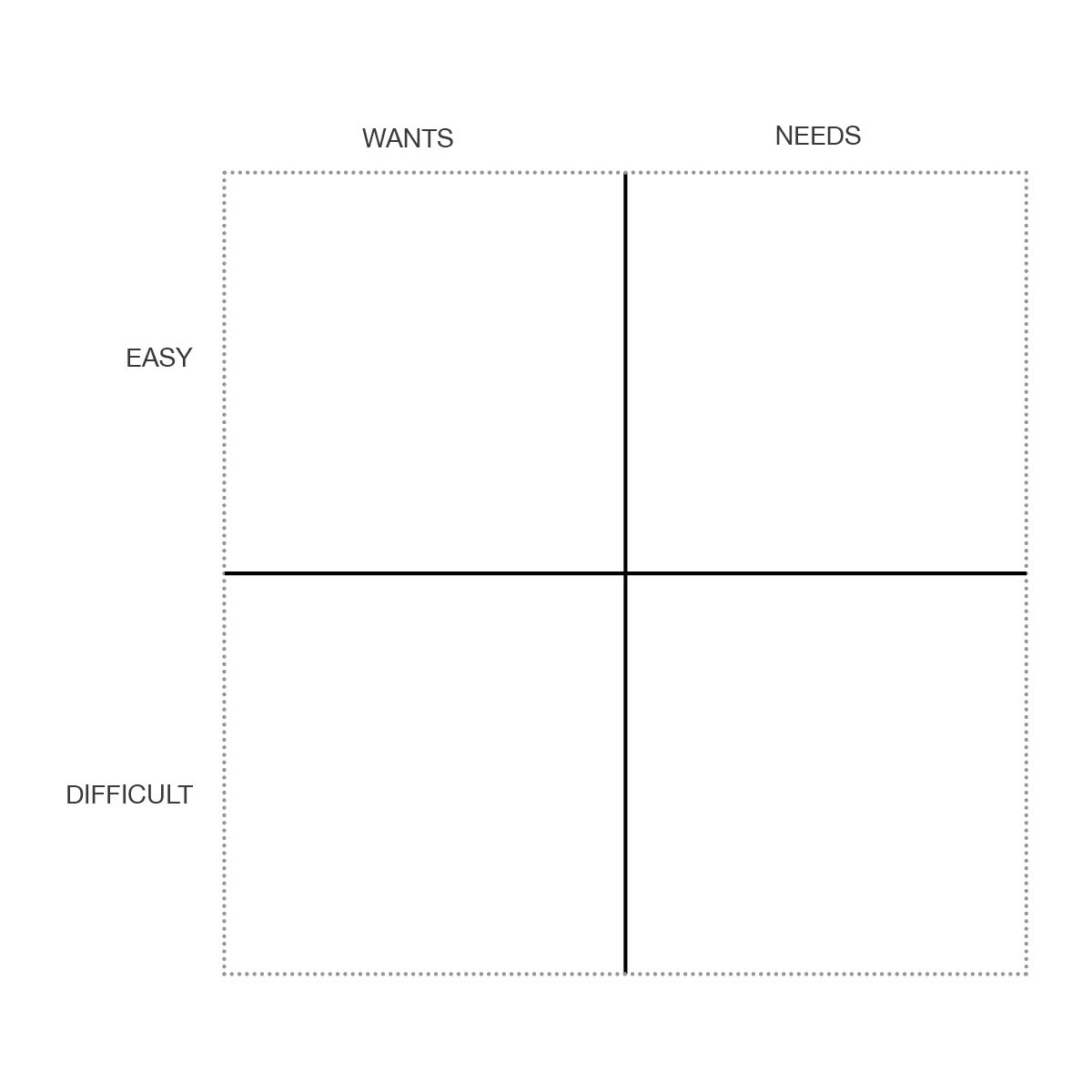 Much of the needs and wants you’ve already begun discovering in Steps 1-4. Continue to draw information, concerns, complaints, and challenges from your stakeholders. Add this to your list and plot it in your grid. Looking at the intersections and determine what to tackle first.
Much of the needs and wants you’ve already begun discovering in Steps 1-4. Continue to draw information, concerns, complaints, and challenges from your stakeholders. Add this to your list and plot it in your grid. Looking at the intersections and determine what to tackle first.
Bottom line: Be realistic. Yes each organization is different, and each industry will have its own timelines and material demands. It’s about understanding the full scope of what needs to be invested in – how long and how much – and planning around that. That’s the balancing act: what’s needed vs. what’s realistic in the time you have with the resources you have. This is a duty for a change agent (which happens to be our specialty!).
Next on our blog series: Step #6: Emotion vs. Execution. Reconciling Sexy End-Goals with the Devilish Details.
Interested in this topic or others we've been speaking about? Click on the word bubble to leave us a comment, send a tweet, or connect via LinkedIn! Want to hear directly from Angela Yeh and her 15+ years of design recruiting experience? Drop us a line at info@yehideology.com
IDEA 2015 Submissions Now Open!
The search is on for this year's exceptional design! You know that your product or concept is the best, so put it to the test by entering the International Design Excellence Awards (IDEA) competition.
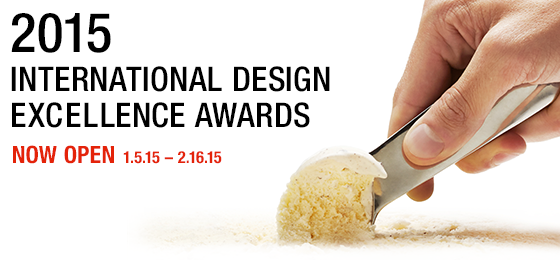
Each year, IDEA recognizes design excellence in products, interaction design, service design, strategy, research, concepts and student designs in several categories. IDEA represents prestigious recognition within the industrial design community, and entry is open to all until February 16th. Winners are chosen based on a list of seven criteria, which includes innovation, benefit to the user and responsibility.
This year's Jury Chair, Matthew Marzynski, IDSA, of the University of Washington, will lead a panel of 24 design experts, who are all chosen for their industry leadership. There are two judging stages: at the second of which, finalists are judged live at The Henry Ford Museum in Dearborn, MI, where Gold, Silver, and Bronze winners are chosen.
Last year, nearly 2,000 entries were submitted from around the world – this could be your year. Previous IDEA winners include the Tesla Model S, the Nest Thermostat, and the Ultimate Ear Boom Speaker.
Results will be revealed live at the IDSA International Conference on August 22nd in Seattle.
About IDSA: Celebrating its 50th year, the Industrial Designers Society of America (IDSA) is one of the oldest and largest membership organizations for industrial design professionals. IDSA sponsors the annual International Design Excellence Awards, one of the most preeminent design competitions in the US, and its events, including an annual international design conference and five district conferences, bring together the brightest design minds. INNOVATION is IDSA’s flagship publication. IDSA has more than 3,200 members in 28 professional chapters in the US and internationally. To learn more about IDSA, visit www.idsa.org, and connect via Twitter, LinkedIn and Facebook.

